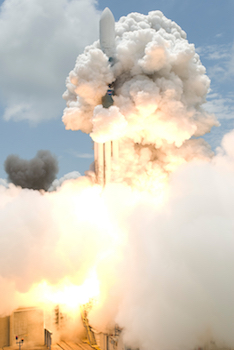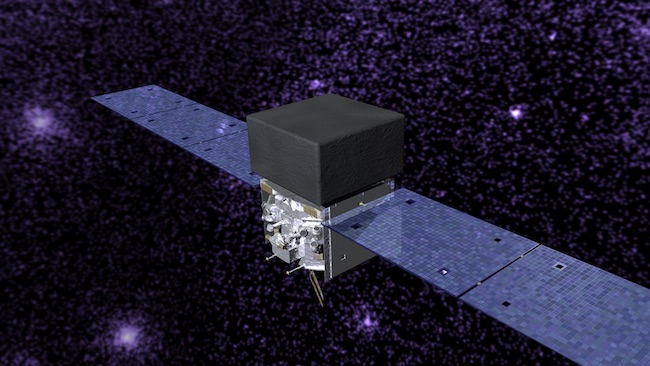Mission Information

A Boeing Delta II launch vehicle blasts off carrying the Fermi Gamma-ray Space Telescope into space from Cape Canaveral Air Force Station on June 11, 2008. (Credit: NASA, DOE, Fermi Gamma-ray Space Telescope Collaboration)
Fermi is a powerful gamma ray space observatory that has opened a wide window on the universe. Gamma rays are the highest-energy form of light, and the gamma-ray sky is spectacularly different from the one we perceive with our own eyes. With a huge leap in all key capabilities, Fermi data is enabling scientists to answer persistent questions across a broad range of topics, including supermassive black-hole systems, pulsars, the origin of cosmic rays, and searches for signals of new physics.
The mission is an astrophysics and particle physics partnership, developed by NASA in collaboration with the U.S. Department of Energy, along with important contributions from academic institutions and partners in France, Germany, Italy, Japan, Sweden, and the United States.
Fermi (known as Gamma-ray Large Area Space Telescope, or GLAST, during its development) was launched on June 11, 2008. It is named after Enrico Fermi, an Italian-American scientist who did pioneering work in high-energy physics.
Use the following links (or links in the sidebar) to learn more about the exciting science Fermi is doing and the instruments it uses to explore the gamma-ray sky.

This illustration shows the Fermi Gamma-ray Space Telescope, which has now been studying the extreme universe for a decade. (Credit: NASA’s Goddard Space Flight Center/Conceptual Image Lab)



